- Home
- Resources
- Safe work procedures
- Safe cleanup of storm damaged materials that may contain asbestos
Asbestos
Safe cleanup of storm damaged materials that may contain asbestos
It is essential to protect yourself and others when removing debris, particularly when asbestos is concerned. The following procedure will help you to safely cleanup after a storm.
Equipment
The equipment used will be influenced by what is readily available following a storm event.
- plastic sheeting, tarpaulins (new tarp is preferable) or old bed sheeting, curtains
- plastic bags (thick 200 µm plastic is preferable) or plastic shopping bags or garbage bags that can be securely tied
- duct tape or gaffer tape
- bucket for water
- rags or chuck wipes
- garden hose
- shovel or garden spade
- PVA glue or acrylic paint
- paint brushes
- timber dunnage (to support the asbestos debris package off the ground)
- personal protective equipment:
- disposable P2 respirator
- disposable overalls (eg. European standards type 5 and type 6) or old clothing (e.g. long sleeve shirts) that can be thrown away afterwards
- gum boots or laceless boots.
Always wear personal protective equipment when cleaning up debris that may contain asbestos.
Potential hazards
Protect yourselves from other potential dangers after a storm, such as fallen power lines and control the risk of falling from heights if on a roof.
- Check the site for hazards from debris such as sharp edges or protruding nails.
- If electrical lines are down - do not enter the area, ensure electricity supply has been turned off by a licensed electrical contractor or energy supplier.
Step 2
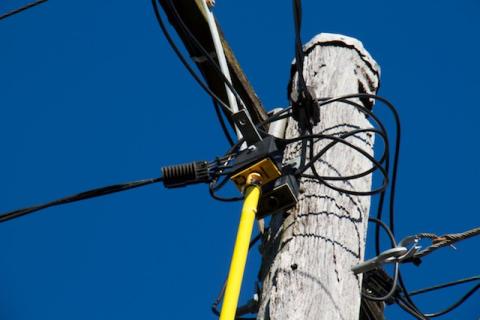
2. De-energise the building by removing the pole fuse with a fibreglass pole (while standing on insulated rubber mat).
Step 1
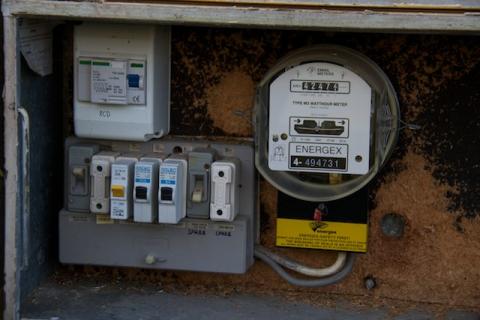
1. The small package electrical board fixed over the asbestos insulation board (arrows point to visible edges).
Before picking up any asbestos containing material (ACM) debris, access to the area should be restricted by closing gates or doors and erecting signage or tape.
Temporarily wet, seal, or cover debris
If there is insufficient time to clean up the area immediately, several tasks should be completed as soon as possible.
- Keep ACM debris wet by lightly hosing with water or spraying with a mixture of 5 parts water and 1 part PVA glue.
- For building materials still in their original position, seal any small fractured or exposed edges with paint or PVA glue.
- Temporarily cover debris with a tarp or sheet, or similar. Keep the cover moist and pegged to the ground or weighed down.
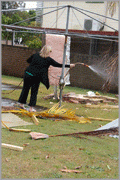
Apply lightly sprayed water on the ACM debris.
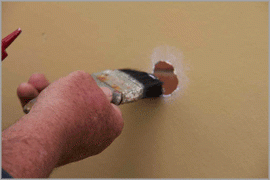
Damaged wall sheeting that is still in its original position can have PVA glue applied directly to the broken surface using a paint brush.
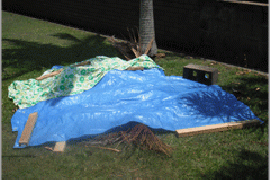
Debris temporarily covered with a tarp and sheet and edges weighted down.
Storm and wind damage cleanup
Remove hand jewellery such as watches and rings.
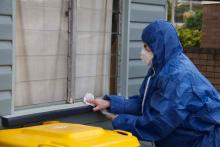
Step 1
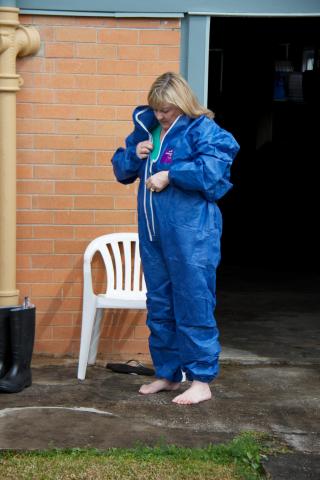
1. Put on your disposable overalls over your clothes (or wear old clothes you can throw away).
Step 2
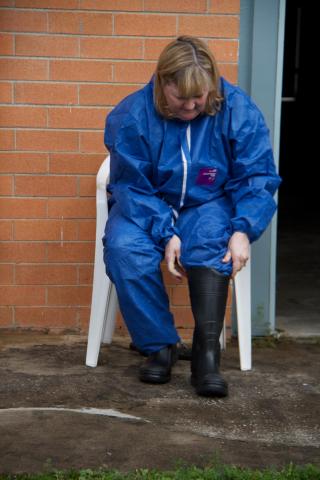
2. Put on gum boots or laceless boots.
Step 3
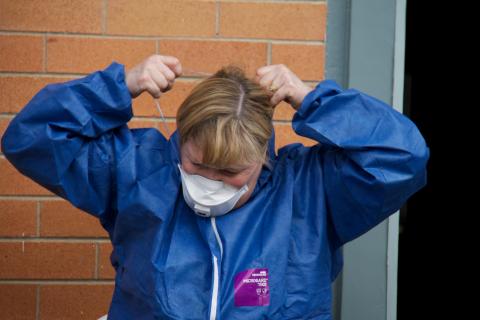
3. Put on the P2 disposable respirator and ensure the mask has a tight fit to your face and creates a good seal.
Step 4
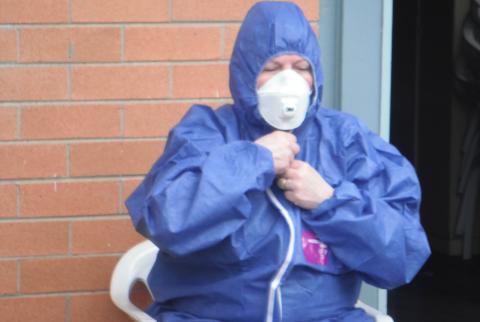
4. Pull the hood over your head.
Step 5
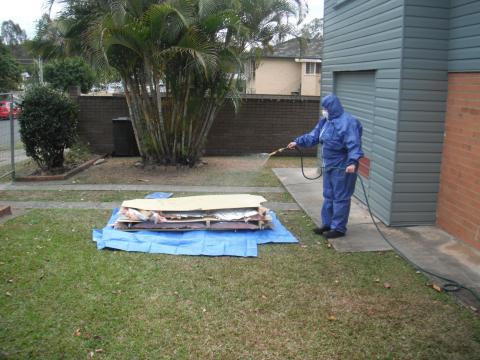
5. Lightly spray the debris.
Step 6
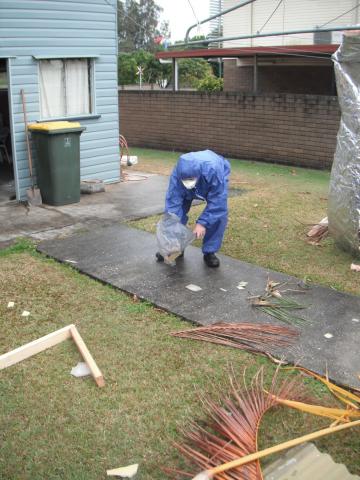
6. For small pieces of debris, invert a plastic bag and pick up the wetted debris directly into the bag. Note that shopping bags and regular garbage bags have only thin plastic and should only be filled to a quarter to prevent splitting.
Step 7
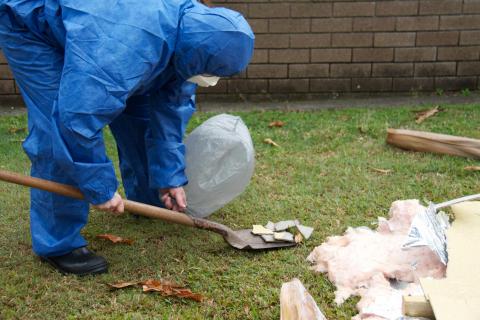
7. Or, pick up smaller pieces using a shovel to collect debris and soil immediately below debris, and place all into a plastic bag.
Step 8
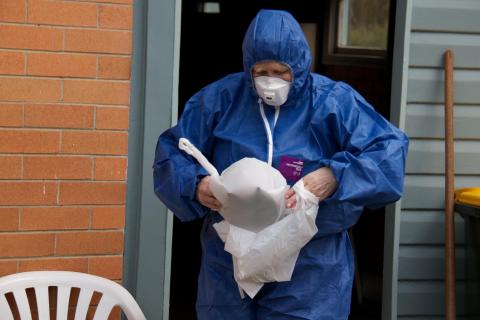
8. Double bag or triple bag collected debris to stop sharp pieces breaking through the bags. If the bag accidentally breaks then tape up the split with duct tape or insert into an additional plastic bag.
Step 9
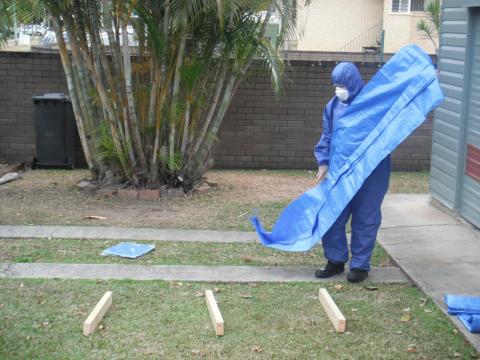
9. For larger pieces of debris, set up some timber at a convenient access point to the property for later disposal (this is known as dunnage). This will ensure the packaged debris is off the ground for slinging into a truck or skip later. Then place two tarps (or plastic sheeting, bedding sheet or similar) over the top of the timber to form the bottom of the package of debris.
Step 10
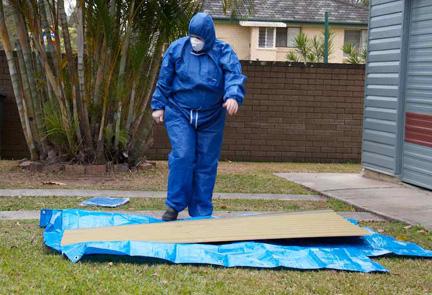
10. Place large debris directly onto the tarp (or similar) to support the base of the package. Place other debris carefully on top.
Step 11
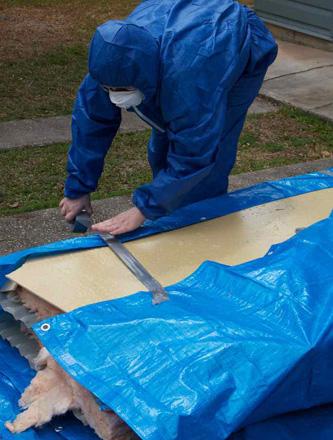
11. Wrap all the larger debris together with the first layer of tarp (or similar). Wrap it with a good quality tape.
Step 12
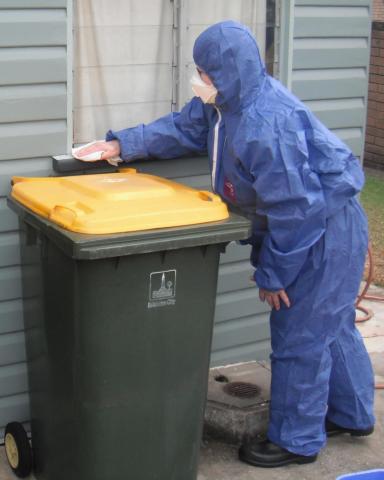
12. Wet wipe any horizontal flat surfaces around the storm damaged area using a wet rag once and then folding in half to use a second time only. Do not wash out rags or re-use them. Dispose of rags in a waste bag and seal it.
Step 13
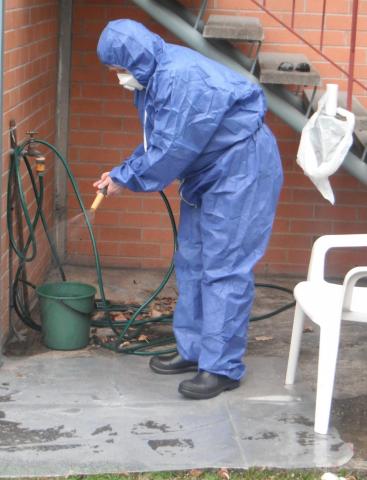
13. Stand on a clean piece of tarp or plastic. Lightly spray your overalls or old clothes, and boots.
Step 14
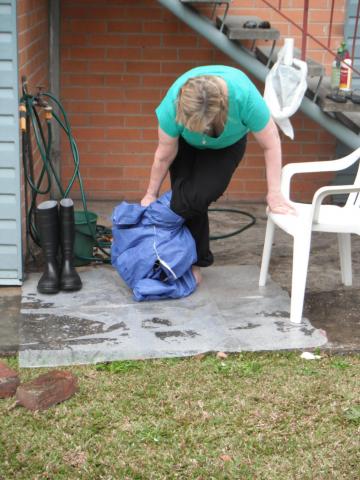
14. Remove boots, followed by the overalls or old clothing. Dispose of overalls (or clothing) and piece of tarp or plastic, you were standing on, into a plastic waste bag.
Step 15
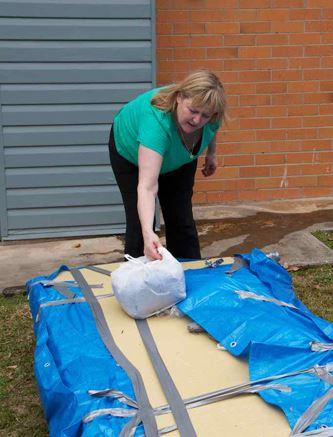
15. Lastly remove your P2 respirator and also dispose of it in the waste bag. Seal bag and wash hands. Place this waste bag with other waste.
Step 16
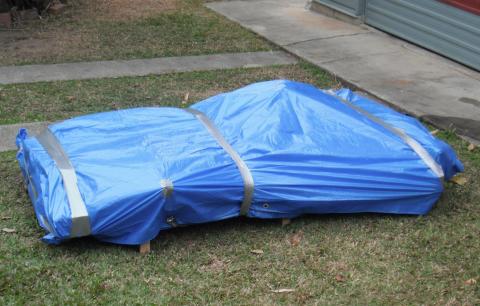
16. Use the second layer of tarp (or similar) to further seal the package. Tape around the whole package. Look for sharp edges that may tear through the tarp (or similar) and reinforce with tape if required. Now shower and wash your hair.
- Home
- General information
- What is asbestos?
- How was asbestos used?
- Are there health effects?
- The risks of exposure
- Health monitoring
- Legislation and codes of practice
- Low density asbestos fibre board
- Asbestos contaminated dust or debris
- Fires
- Cleaning up after floods and storms
- Importation prohibited
- Government and agency roles
- Asbestos in government assets
- Know where asbestos is
- Removing or disturbing asbestos
- Practical guidance
- Resources
- Asbestos alerts
- Asbestos news
- Codes of practice
- Guidance
- Films
- Asbestos safety session 2021
- Asbestos safety session 2020
- Cleaning Asbestos Roofs
- Shadow vacuuming with a H-Class vacuum cleaner
- Use and maintenance of a H-Class vacuum cleaner
- Identifying low density asbestos fibre board hazards and risks
- Working safely with asbestos for the home renovator
- How to properly wear personal protective equipment for airborne contaminants
- Personal protective equipment
- Dear Dad - An asbestos awareness film
- Clear and present danger: Asbestos exposed
- Uses and applications of asbestos - an extract from a film by Parsons Brinckerhoff
- Asbestos health issues - an extract from a film by Parsons Brinckerhoff
- Safe work procedure - storm and wind damage cleanup
- Drilling into asbestos walls and ceilings
- Asbestos - Removing switchboard panels
- Decontamination procedure, personal decontamination and cleanup procedures
- Asbestos awareness
- Safe work procedures
- Preparation before commencing the task
- Preparing and painting corrugated asbestos cement roof and fences
- Drilling into non-friable asbestos using a thickened substance to control airborne fibres and dust
- Drilling into non-friable ACM using an H rated industrial HEPA filter vacuum to control airborne fibres and dust
- Removing a small package electrical switchboard
- Cleanup and disposal
- Safe cleanup of storm damaged materials that may contain asbestos
- Frequently asked questions for homeowners and the general public
- Podcasts
- Strategies
- Working Safely with Asbestos Guide
- Asbestos awareness week 2025
- Asbestos management compliance campaign
- Induction and safety training for unlicensed work
- Sanctions